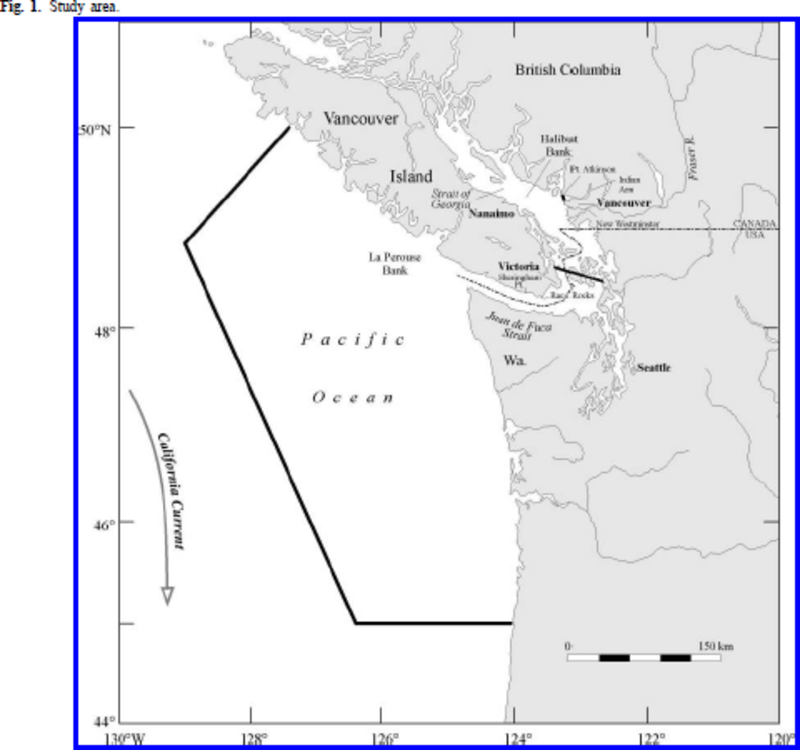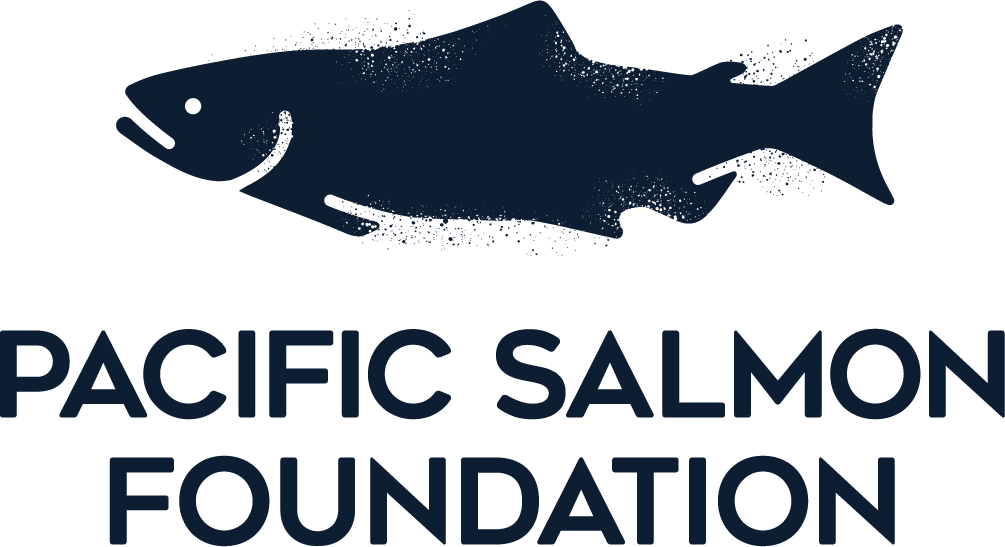Dispersion of discharged ship ballast water in Vancouver Harbour, Juan De Fuca Strait, and offshore of the Washington Coast
The dispersion of harmful nonindigenous biological organisms that may be present in discharged ship ballast water is an issue of international interest. The present paper examines this issue as it applies to Vancouver Harbour and Juan de Fuca Strait, British Columbia, and the adjacent U.S. waters. The objective is to determine whether potential mechanisms exist to transport viable organisms that might be present in discharged ballast water to favourable reproductive habitats within British Columbian coastal waters. The study applied three-dimensional harmonic finite element models to generate representative tidal, atmospheric, and density-driven flow fields. Particle-tracking techniques were used to simulate representative trajectories of passive and active ballast water organisms discharged at existing deballasting sites. It was determined that the safest deballasting sites are off the west coast. Under normal conditions, organisms move southward (summer) or northward (winter) in the Shelf Break Current and only under strong eastward or northward winds are they transported to the Washington or Vancouver Island shorelines.
Simple
- Date (Publication)
- 2003-04-24
- Date (Revision)
- 2003-02-02
- Date (Creation)
- 2002-09-17
- Cited responsible party
-
Organisation name Individual name Electronic mail address Role DFO
Colin Levings
Principal investigator Triton Consultants Ltd.
M.R. Larson
Principal investigator Institute of Ocean Sciences, Fisheries and Oceans Canada
M.G.G. Foreman
Principal investigator Triton Consultants Ltd
M.R.Tarbotton
Principal investigator
- Presentation form
- Digital document
- Other citation details
-
J. Environ. Eng. Sci. 2: 163–176 (2003)
doi: 10.1139/S03-014
Written discussion of this article is welcomed and will be received
by the Editor until 30 September 2003.
- Purpose
-
The goal of the present investigationwas to determine whether potential mechanisms exist for the transport of viable biological organisms present in discharged ballast water to favourable reproductive habitats within the sheltered B.C. coastal waters in the Straits of Georgia and Juan de Fuca. It is far beyond the intent of this paper to provide statistical estimates of the fate of all organisms that might be discharged from ballast water into West Coast coastal waters as this would require an exhaustive study with different modelling techniques than have been employed here. Rather, the objective of this paper is to demonstrate whether the presently recommended alternate deballasting locations could result in undesirable particle transport during typical conditions. Due to the wide range of parameters affecting the transport of organisms (e.g., discharge location, tidal and seasonal conditions, organism properties, etc.), it is not feasible to investigate this issue with field techniques, and numerical simulation is the only practical approach to the problem. The remainder of the paper describes the simulation assumptions and procedures as well as the conclusions resulting from this work.
- Status
- Completed
- Maintenance and update frequency
- Not planned
-
Government of Canada Core Subject Thesaurus
-
-
Discharge
-
Microorganisms
-
-
DFO Areas
-
-
North Pacific Ocean > South Inner Coast(Johnstone Strait, Strait of Georgia, Juan de Fuca, inlets and passages)
-
-
DFO Areas
-
-
North Pacific Ocean > South Inner Coast(Johnstone Strait, Strait of Georgia, Juan de Fuca, inlets and passages)
-
- Language
-
English
- Character set
- UTF8
- Topic category
-
- Oceans
- Environment description
-
8 KB
- Description
-
Vancouver Harbour, Juan De Fuca Strait, and offshore of the Washington Coast
))
- Begin
- 1995
- End
- 2004
- Distribution format
-
Name Version electronic
none
- Distributor contact
-
Organisation name Individual name Electronic mail address Role Pacific Salmon Foundation
Isobel Pearsall
Distributor
- OnLine resource
-
Protocol Linkage Name WWW:LINK-1.0-http--link
https://www.dfo-mpo.gc.ca/science/data-donnees/index-eng.html DFO Science website
WWW:DOWNLOAD-1.0-http--download
https://soggy2.zoology.ubc.ca/geonetwork/srv/api/records/7bb96de3-8b25-495e-bcef-c87687470df6/attachments/7bb96de3-8b25-495e-bcef-c87687470df6.pdf 7bb96de3-8b25-495e-bcef-c87687470df6.pdf WWW:DOWNLOAD-1.0-http--download
https://soggy2.zoology.ubc.ca/geonetwork/srv/api/records/7bb96de3-8b25-495e-bcef-c87687470df6/attachments/7bb96de3-8b25-495e-bcef-c87687470df6.xlsx 7bb96de3-8b25-495e-bcef-c87687470df6.xlsx
- Hierarchy level
- Dataset
- Statement
-
Levings produced paper copy. Fraser scanned with Fujitsu Scansnap s1500 (ABBY Finereader OCR software). Data was extracted through Adobe Reader conversion and manual entry into MS Excel.
Metadata
- File identifier
- 7bb96de3-8b25-495e-bcef-c87687470df6 XML
- Metadata language
-
eng
- Character set
- UTF8
- Hierarchy level
- Dataset
- Date stamp
- 2023-12-19T00:20:46.967Z
- Metadata standard name
-
North American Profile of ISO19115:2003 - Geographic information - Metadata
- Metadata standard version
-
NAP - CAN/CGSB-171.100-2009
- Metadata author
-
Organisation name Individual name Electronic mail address Role Pacific Salmon Foundation
Sarah Fraser
Author
- Other language
-
Language Character encoding French UTF8 English UTF8
Overviews

Spatial extent
))
Provided by
